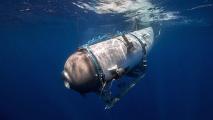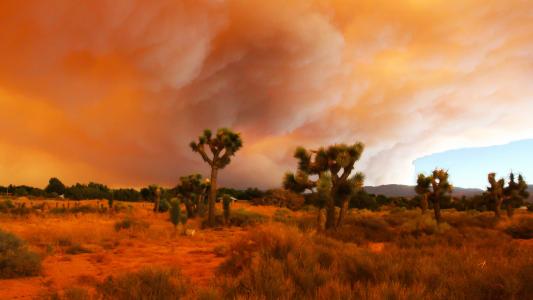A fast-moving wildfire swept through Malden, Washington, on September 7, destroying 80% of the small town’s structures — even its fire station succumbed to the blaze.
The wildfires also destroyed the infrastructure the town’s residents used to access the internet. This has left many with no wireless calling, no way to fill out online insurance forms, and no way to access online classes.
It’s also hindered relief efforts — emergency responders needed the internet to communicate with residents, place supply requests, and coordinate efforts to combat nearby wildfires.
Enter: SpaceX’s internet-beaming Starlink satellites.
SpaceX’s Starlink Satellites
In 2015, SpaceX announced plans to build Starlink, a globe-spanning constellation of tiny satellites capable of providing the entire world with reliable high-speed internet.
Ultimately, it aims to deploy 40,000 Starlink satellites, but so far, just about 700 are in orbit — and they happen to be in a place that could service Washington state.
Richard Hall, the telecommunications leader for Washington’s Emergency Management Division (EMD), told CNBC that the EMD was already in talks with SpaceX about using its Starlink satellites to bring internet to rural areas when the wildfires started.
SpaceX then offered to loan the EMD seven Starlink terminals, which CEO Elon Musk famously described as looking like “a UFO on a stick.”
The EMD has since used the terminals to create internet hotspots in Malden and other areas affected by the Washington wildfires. According to Hall, the set-up process took between five and 10 minutes — he just had to plug in a terminal and point it north.
“I have never set up any tactical satellite equipment that has been as quick to set up, and anywhere near as reliable,” he said. “It doesn’t require a truck and a trailer and a whole lot of other additional equipment.”
“I have spent the better part of four or five hours with some satellite equipment trying to get a good (connection), so, to me, it’s amazing,” he added.
Hall was also impressed with the quality of the Starlink internet, telling CNBC that it doubles the bandwidth of other satellite broadband services the EMD has used, with consistently low latency.
Beyond the Washington Wildfires
The EMD’s glowing review of the Starlink internet network could help shape its future in the U.S.
SpaceX is currently in the midst of a private beta test of its Starlink internet, and a public beta test is expected to follow. As it stands, though, the deployment in Washington marks the first public usage of the network.
As far as we’re concerned, these terminals are here to stay.
Richard Hall
In October, the FCC will begin auctioning off $16 billion in subsidies to companies to provide fast broadband internet to more than six million rural homes and businesses that currently lack it. SpaceX wants to be one of those companies, and this successful real-world application of the Starlink internet could help it reach that goal.
For now, though, the Starlink satellites will continue to provide much-needed internet access to people devastated by the Washington wildfires — and the EMD has no intention of turning in the terminals any time soon.
SpaceX has not revealed pricing details or the date for the launch of a commercial product just yet, but Hall is already sold.
“Myself and other folks at my agency want to begin to hash (the cost) out because these, at least as far as we’re concerned, are here to stay for us,” he said.
We’d love to hear from you! If you have a comment about this article or if you have a tip for a future Freethink story, please email us at [email protected].





